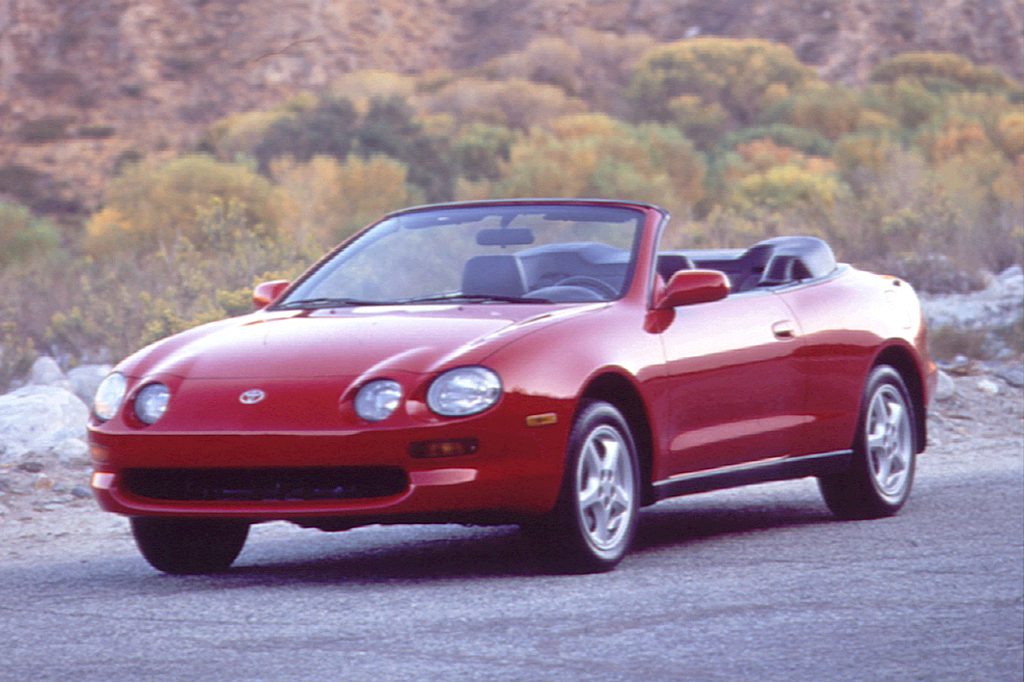| Sporty/performance car; Built in Japan |
|
|
| Good condition price range: $1,500 – $5,100* |

1995 Toyota Celica 2-door convertible

1995 Toyota Celica GT 2-door hatchback

1996 Toyota Celica GT 2-door hatchback

1996 Toyota Celica 25th Anniversary 2-door convertible

1996 Toyota Celica interior
| Pros: |
|
| Cons: |
|
Even though the price may be high, if you want two-passenger fun and reliability, a Celica is worth the extra bucks–partly due to Toyota’s reputation for quality.
Overview
Curvaceously redesigned for 1994, Toyota’s front-drive sports coupe came as a 2-door notchback or hatchback, in base (ST) or more costly GT guise. Dimensions grew slightly, including a 2-inch increase in overall width. The fresh front end sported four round headlights. Dual airbags were standard, and antilock braking optional. The previous-generation All-Trac and convertible models did not return. A new 1.8-liter, dual-overhead-cam 4-cylinder engine went into the ST, while the sportier GT got a carryover 2.2-liter four. Celicas employed a standard 5-speed manual gearbox, but a 4-speed automatic transmission could be installed in any model.
Yearly Updates
| 1995 Celica A convertible joined the lineup, as a ’95 GT model. Convertibles had a standard power top with a glass rear window and electric defroster, as well as power rear-quarter windows. Coupes showed no significant change this season. |
| 1996 Celica Coupes could now be ordered with more prominent “contoured rocker panels.” These were add-on lower side skirts, aiming to provide a sportier look. Toyota installed extra sound insulation this year, in an effort to respond to complaints about excessive noise levels in Celicas. |
| 1997 Celica No more GT notchback coupes were marketed, but that body style remained available for ST Celicas. The GT’s engine gained five horsepower. |
| 1998 Celica The ST model and its 1.8-liter engine are gone for ’98. |
| 1999 Celica Toyota dropped the notchback, leaving only the hatchback and convertible. A redesigned Celica appeared for 2000, with styling inspired by Indy race cars. |
